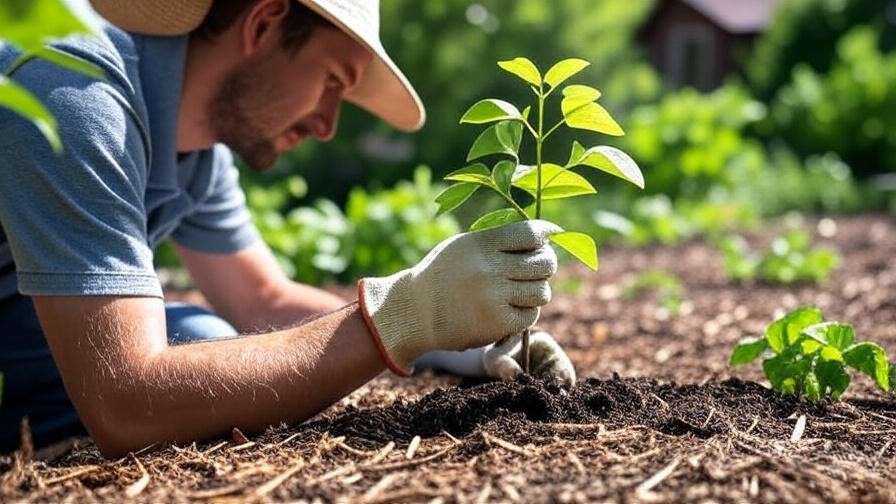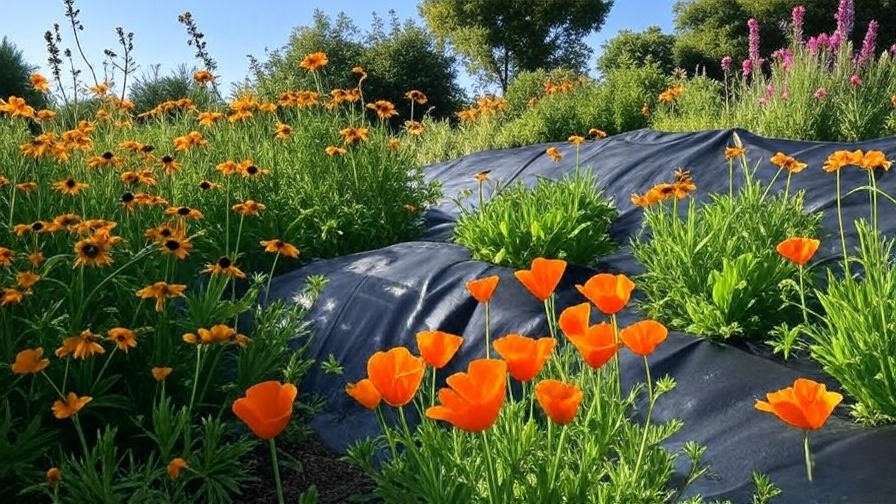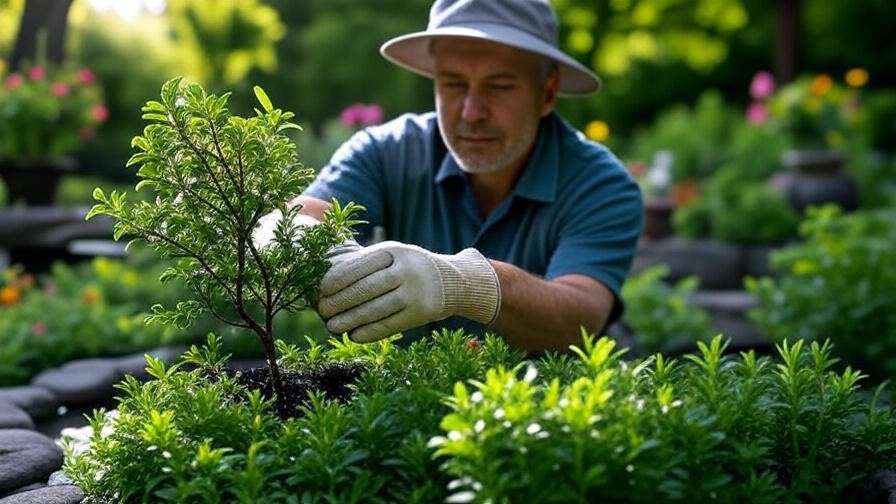Imagine stepping into your backyard, expecting a serene garden, only to find clusters of unfamiliar seedlings sprouting everywhere. You’ve just encountered the relentless Tree of Heaven seeds—tiny invaders from the notorious Ailanthus altissima, an invasive species that can wreak havoc on your garden and local ecosystem. These seeds, carried by wind or water, spread rapidly, outcompeting your favorite plants and threatening biodiversity. As a gardener, you want a thriving, healthy yard, but Tree of Heaven seeds can make that dream feel out of reach. Don’t worry—this comprehensive guide, crafted with insights from arborists and invasive species experts, will equip you with practical, expert-backed strategies to safely manage and control Tree of Heaven seeds. Whether you’re a novice gardener or a seasoned green thumb, you’ll find actionable solutions to protect your garden and restore balance to your outdoor space. 🌻
In this article, we’ll explore what makes Tree of Heaven such a challenge, why its seeds are a problem, and how to identify and control them effectively. From prevention to eco-friendly removal methods, we’ll cover everything you need to create a healthier, more sustainable garden. Let’s dive in and take back your yard! 🌳
Understanding the Tree of Heaven and Its Seeds 🌳
What Is the Tree of Heaven? 🌲
The Tree of Heaven (Ailanthus altissima), often called the “stink tree” for its pungent odor, is a fast-growing, deciduous tree native to China. Introduced to North America in the 18th century as an ornamental plant, it has since become a notorious invasive species. Known for its adaptability, it thrives in urban areas, disturbed soils, and even cracks in pavement. Its feathery, compound leaves and clusters of small yellow-green flowers make it visually distinct, but its aggressive growth is what gardeners dread. 😷
This tree can reach heights of 80 feet, with a single female tree producing up to 300,000 seeds annually. Its resilience—tolerating poor soil, drought, and pollution—makes it a formidable opponent in any garden. Understanding its biology is the first step to controlling its spread.
Why Are Tree of Heaven Seeds a Problem? 🌱
Tree of Heaven seeds are the heart of its invasive nature. These small, winged samaras are lightweight and designed for dispersal, traveling far via wind, water, or even on vehicles and clothing. A single tree can blanket an area with seeds, leading to dense patches of seedlings that choke out native plants. This rapid spread disrupts ecosystems, reduces biodiversity, and creates monocultures that harm pollinators and wildlife. 🐝
Beyond ecological damage, Tree of Heaven supports pests like the spotted lanternfly, an invasive insect that further threatens crops and native trees. In gardens, its deep roots and suckering growth make eradication challenging, often requiring repeated efforts. Left unchecked, these seeds can transform a vibrant garden into a battleground.
Identifying Tree of Heaven Seeds and Seedlings 🌿
Recognizing Tree of Heaven seeds and seedlings is crucial for early intervention. The seeds, or samaras, are flat, twisted, and about an inch long, with a single seed in the center. They range from green to reddish-brown and hang in clusters from late summer to fall. Seedlings are equally distinctive, with pinnate leaves resembling sumac but with a telltale notched base and a slightly fuzzy texture.
To avoid confusion with native plants like staghorn sumac, look for the Tree of Heaven’s smooth leaf edges (sumac has serrated edges) and its characteristic odor when leaves are crushed. Regular inspection, especially in spring and early summer, helps catch seedlings before they establish deep roots. 📸 Tip: Take photos during inspections to compare with online guides from your local cooperative extension service.
The Risks of Ignoring Tree of Heaven Seeds 🚨
Ignoring Tree of Heaven seeds can have serious consequences for your garden and beyond. In your yard, seedlings compete for sunlight, water, and nutrients, stunting the growth of desired plants like roses or tomatoes. Their extensive root systems release allelopathic chemicals, inhibiting nearby plant growth and degrading soil health. Over time, this can turn a diverse garden into a barren patch dominated by Ailanthus.
On a larger scale, unchecked Tree of Heaven contributes to biodiversity loss. Dr. Emily Carter, an invasive species ecologist, notes, “Ailanthus altissima disrupts native ecosystems by outcompeting plants that support local wildlife, leading to cascading effects on pollinators and birds.” A real-world example comes from a Pennsylvania community where Tree of Heaven overgrowth fueled a spotted lanternfly outbreak, costing thousands in agricultural losses. Ignoring these seeds isn’t just a garden problem—it’s an environmental one. 🌍
Safe and Effective Methods to Control Tree of Heaven Seeds 🛠️
Prevention: Stopping Seed Spread Before It Starts 🌬️
Preventing Tree of Heaven seeds from taking root is your first line of defense. Timing is critical—remove seed pods in late summer before they mature and disperse. Use pruning shears to cut clusters from female trees, bagging them securely for disposal. Avoid composting, as seeds can remain viable. 🗑️
Mulching is another effective strategy. Apply a 3–4 inch layer of organic mulch, like wood chips or straw, around garden beds to block seedling germination. Landscape fabric can further suppress growth, especially in high-risk areas near mature Ailanthus trees. Regular monitoring, ideally weekly during spring and summer, ensures you catch new seedlings early.

Manual Removal Techniques ✂️
For small infestations, manual removal is a safe, chemical-free option. Follow these steps for effective seedling removal:
- Wear protective gear: Use gloves and long sleeves to avoid skin irritation from the tree’s sap. 🧤
- Pull seedlings early: Target seedlings in spring when they’re small and roots are shallow.
- Remove the entire root: Use a hand trowel or shovel to dig out the taproot, as leftover fragments can resprout.
- Dispose properly: Place seedlings in sealed bags for municipal waste pickup, not compost.
For larger saplings, cut them close to the ground and monitor for regrowth. Persistence is key—Tree of Heaven is notorious for resprouting. Pro tip: Water the soil lightly before pulling to loosen roots, making removal easier.

Chemical Control: When and How to Use Herbicides Safely 🧪
For larger infestations, herbicides may be necessary, but use them judiciously to protect your garden and environment. Glyphosate and triclopyr are effective options. Here’s how to apply them:
- Foliar spraying: Apply glyphosate to seedling leaves in early summer for maximum absorption. Use a 2% solution and avoid windy days to prevent drift to non-target plants.
- Cut-stump treatment: For mature trees, cut the trunk near the base and immediately apply concentrated triclopyr to the stump to prevent regrowth.
- Basal bark application: Spray herbicide around the lower 12 inches of the trunk for trees too large to cut.
Always follow label instructions and local regulations. Certified arborist Jane Thompson advises, “Apply herbicides in late summer when the tree is actively transporting nutrients to roots for best results.” Protect pollinators by avoiding spraying near flowering plants. 🐝
Natural and Eco-Friendly Alternatives 🌎
If chemicals aren’t your preference, try these eco-friendly methods:
- Smothering: Cover infested areas with heavy tarps or cardboard for 6–12 months to block sunlight and starve seedlings.
- Competitive planting: Introduce native plants like milkweed (Asclepias syriaca) or coneflowers (Echinacea purpurea) to outcompete Tree of Heaven seedlings. These natives also support pollinators and wildlife.
- Biological control: While still experimental, researchers are exploring fungi like Verticillium to suppress Ailanthus. Check with local extension services for updates on approved methods.

Combine these approaches for a holistic strategy that minimizes environmental impact while controlling Tree of Heaven seeds.
Long-Term Management Strategies for a Tree of Heaven-Free Garden 🌼
Creating a Maintenance Plan 📅
To keep Tree of Heaven seeds from reclaiming your garden, a proactive maintenance plan is essential. Here’s a seasonal checklist to stay ahead:
- Spring: Inspect your garden weekly for new seedlings, focusing on areas near fences, driveways, or disturbed soil where Ailanthus thrives. Remove any sprouts immediately using manual techniques. 🌱
- Summer: Monitor for seed pod formation on mature trees. Prune and dispose of pods before they ripen in late summer. Apply mulch to suppress germination in vulnerable areas.
- Fall: Conduct a thorough cleanup, removing any fallen samaras. Check neighboring properties for Tree of Heaven trees that could spread seeds to your yard.
- Winter: Plan for the next season by ordering native plant seeds or consulting with a local arborist to assess your progress.
Collaboration is also key. Join local invasive species removal programs, such as those offered by cooperative extension services or conservation groups. These initiatives often provide free resources, workshops, or group removal events to tackle Tree of Heaven at a community level. Regular monitoring of nearby vacant lots or public spaces can prevent reinvasion, as seeds can travel hundreds of feet. 🌬️

Restoring Your Garden After Control 🌸
Once Tree of Heaven seeds are under control, focus on restoring your garden’s health. Start with soil rehabilitation, as Ailanthus can deplete nutrients and leave behind allelopathic chemicals that inhibit other plants. Test your soil’s pH and nutrient levels using a kit from your local garden center. Add organic compost or well-rotted manure to replenish nutrients and improve soil structure. A 2–3 inch layer of compost worked into the topsoil can make a significant difference. 🌿
Next, introduce native plants to restore biodiversity and prevent Tree of Heaven from returning. Region-specific options, such as black-eyed Susan (Rudbeckia hirta) in the Northeast or California poppy (Eschscholzia californica) in the West, are excellent choices. These plants are adapted to local conditions, support pollinators, and compete effectively against invasive seedlings. Consult your local native plant society for tailored recommendations.
A success story from Ohio illustrates the power of restoration. Gardener Sarah Miller transformed her Tree of Heaven-infested backyard into a thriving native wildflower garden by combining manual removal, mulching, and planting native species like bee balm (Monarda fistulosa). Within two years, her garden was a haven for butterflies and birds, with no signs of Ailanthus regrowth. 🌻 Her tip: “Patience and consistency are everything. Keep at it, and your garden will thank you!”

Common Mistakes to Avoid When Managing Tree of Heaven Seeds ❌
Even experienced gardeners can make missteps when tackling Tree of Heaven seeds. Here are three common mistakes and how to avoid them:
- Incomplete Removal: Pulling seedlings without removing the entire root often leads to regrowth. Solution: Use a trowel to dig at least 6 inches deep to extract the taproot fully. Check the area weekly for new sprouts.
- Incorrect Herbicide Use: Applying herbicides at the wrong time or concentration can harm other plants or fail to kill Ailanthus. Solution: Follow label instructions precisely and apply in late summer when the tree is most vulnerable. Use a shield to protect nearby plants from overspray.
- Ignoring Neighboring Sources: Seeds from nearby Tree of Heaven trees can reinfest your garden. Solution: Talk to neighbors about cooperative removal or report large infestations to local authorities for community action.
By avoiding these pitfalls, you’ll save time and effort while achieving lasting control.
FAQs About Tree of Heaven Seeds ❓
To address common reader questions and boost SEO, here are expert-backed answers to frequently asked questions about Tree of Heaven seeds:
- Q1: How can I tell if a seedling is Tree of Heaven or a native plant?
A: Compare leaf shape and smell. Tree of Heaven seedlings have smooth-edged, pinnate leaves with a notched base and a foul odor when crushed. Native sumac, often confused with Ailanthus, has serrated leaves and no odor. Use a plant identification app or consult your local extension service for confirmation. 📱 - Q2: Are Tree of Heaven seeds harmful to pets or humans?
A: The seeds themselves are not toxic, but the tree’s sap can cause skin irritation or allergic reactions in some people and pets. Always wear gloves when handling and keep pets away from treated areas. 🐶 - Q3: Can I use Tree of Heaven seeds for any beneficial purpose?
A: Currently, there are no practical uses for Tree of Heaven seeds in gardening or crafts due to their invasive nature. Focus on safe disposal to prevent spread. - Q4: How long does it take to fully eradicate Tree of Heaven from my garden?
A: Eradication can take 1–3 years, depending on the infestation’s size and persistence. Consistent monitoring and removal are critical to prevent regrowth. - Q5: What should I do if my neighbor’s Tree of Heaven is spreading to my property?
A: Approach your neighbor politely, share educational resources about Tree of Heaven’s impact, and offer to help with removal. If they’re unresponsive, contact your local invasive species council for guidance.
Additional Resources and Expert Support 📚
To deepen your knowledge and support your efforts, explore these trusted resources:
- USDA National Invasive Species Information Center: Offers detailed guides on Ailanthus altissima and control methods.
- Local Cooperative Extension Services: Provide region-specific advice and workshops on invasive plant management.
- Native Plant Societies: Source native seeds and plants to restore your garden.
- Recommended Tools: Invest in quality pruning shears (e.g., Felco F-2) and glyphosate-based herbicides like Roundup Pro for effective control.
Joining local environmental groups can amplify your impact. Many communities host invasive species removal days, where you can learn from experts and connect with fellow gardeners. For complex infestations, consult a certified arborist for personalized advice. 🌳
Conclusion: Take Control of Your Garden Today! 🌟
Tree of Heaven seeds may seem like an overwhelming challenge, but with the right knowledge and tools, you can reclaim your garden and protect your local ecosystem. By understanding the tree’s biology, using prevention and removal techniques, and committing to long-term maintenance, you’ll create a healthier, more vibrant outdoor space. Start today by inspecting your yard, removing seedlings, and planting native species to restore balance. Share your progress in the comments, join a local invasive species task force, or explore native gardening resources to keep learning. Your garden—and the environment—deserves it! 🌿













